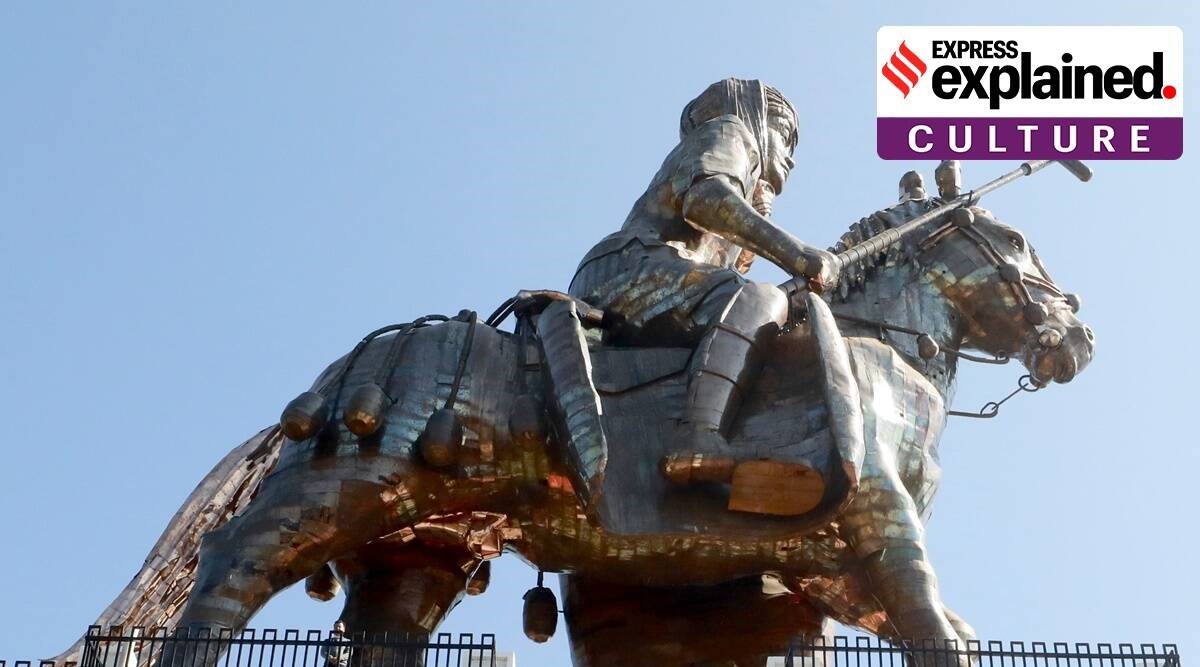Description

Disclaimer: Copyright infringement not intended.
Context: Part of Home Minister Amit Shah’s program in Manipur was the inauguration of a 122-foot-tall statue of a polo player astride a Manipur Pony in Imphal, a project that has been in the works for several years now.
Details:
- It is believed that Sagol Kangjei, the modern-day Polo game originated in Manipur.
- Modern polo is said to have originated from Sagol Kangjei, a sport indigenous to Manipur, in which players ride horses, specifically the Manipur Ponies, which are referenced in records dating back to the 14th century.
- The Manipur Pony is one of five recognized equine breeds of India and has a powerful cultural significance for Manipuri society.
- The Marjing Polo Complex has been developed as a way to conserve the Manipur Pony.
- The state government’s Manipur Pony Conservation and Development Policy 2016 refers to the mythology around the Manipur Pony:
- The Manipuri pony has been indispensable with Manipuri society for its socio-cultural association for centuries. Its antecedents, however, are not clear, as one source stated Tibetan ponies as its ancestors while another source stated its origin to be a cross between Mongolian wild horse & Arabian.
- In some manuscripts, it is referred to as Mangal-sa or Mongolian animal. In Manipuri mythology, the Manipuri pony was regarded to have descended from “Samadon Ayangba” the winged steed of Lord Margjing, one of the guardian deities of Manipur.
- It was created by Sanamahi, also known as Marjing, who is the older of two brothers in archetypal sibling mythology. He feels that his birthright is stolen by his younger brother Pakhangba and creates the winged beast Samadon Ayangba to try to kill his brother. The horse turns out to be really destructive and begins to get out of control. Sanamahi’s father orders him to control it, as a result of which Sanamahi cuts off its wings.
.jpeg)
Conserving the breed:
- However, the small and dwindling numbers of the Manipur Pony have been a cause for concern.
- The 17th Quinquennial Livestock Census 2003 recorded 1,898 Manipur Ponies; the number fell to 1,101 in the 19th Quinquennial Livestock Census in 2012.
- However, when the Manipuri Pony Society tried to conduct a random survey in the state in 2014, they said they found it difficult to count even 500 of the animals.
- The need of the hour is to restore the natural habitat of the Manipur Pony, which is part of the greater biodiversity of the region.
- They are driven out of their natural habitat by encroachment, development, and the massive destruction of wetland areas.
- Because of this, they come out on the streets and are killed in road accidents or through food poisoning, as they try to survive on garbage. To save them, we have to protect their natural habitat and their natural grazing fields.
.jpeg)
https://indianexpress.com/article/explained/explained-culture/sagol-kangjei-ancient-polo-of-manipur-played-manipur-pony-8365959/















